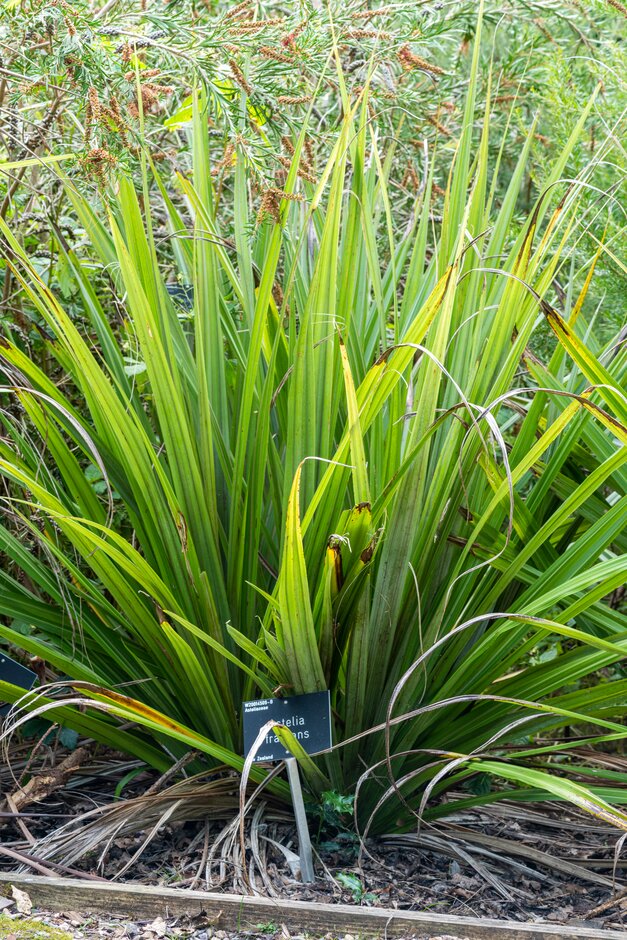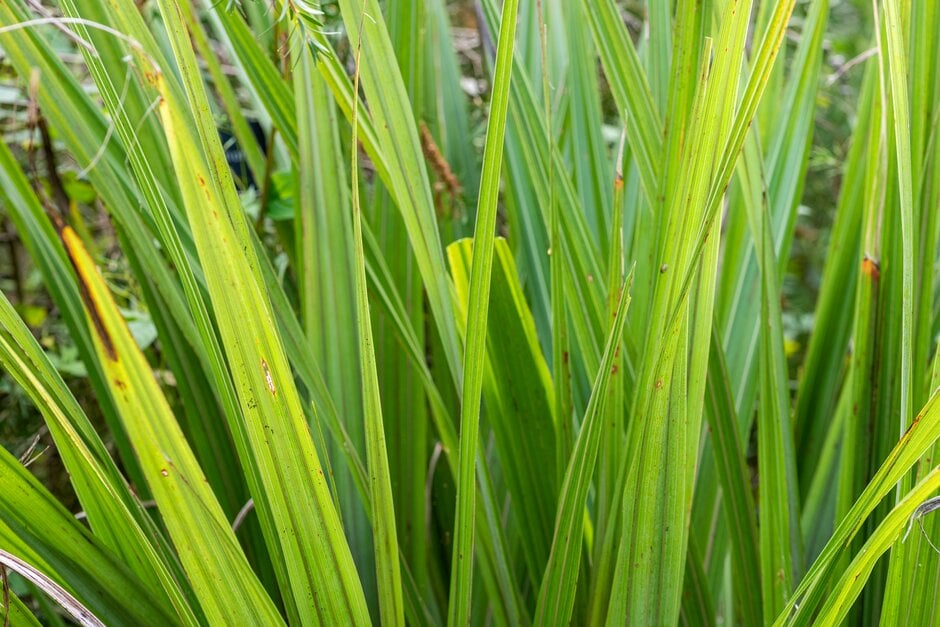Astelia fragrans
A clump-forming evergreen herbaceous perennial, to around 1m (39in) high and across, bearing mid-green strap-shaped leaves which are bright, metallic silver on their undersides. These arch upwards and outwards from the base of the plant and can be up to 1.2m (4ft) long and 8cm (3½in) across. Green, fragrant flowers appear in panicles in the centre of the plant in spring, followed by clusters of orange berries on female plants around 1cm (½in) in diameter in summer. The plant is dioecious - producing either male or female plants, meaning both male and female plants are required for the female to produce berries. An architectural plant, its dramatic foliage providing a useful focal-point in courtyard and urban gardens.
Size
Ultimate height
0.5–1 metresTime to ultimate height
2–5 yearsUltimate spread
0.5–1 metresGrowing conditions
Moisture
Moist but well–drained, Well–drainedpH
Acid, Alkaline, NeutralColour & scent
| Stem | Flower | Foliage | Fruit | |
| Spring | Green | Green Grey Silver | ||
|---|---|---|---|---|
| Summer | Green Grey Silver | Orange | ||
| Autumn | Green Grey Silver | |||
| Winter | Green Grey Silver |
Position
- Partial shade
Aspect
South–facing or West–facing or East–facing
Exposure
Sheltered Hardiness
H3Botanical details
- Family
- Asteliaceae
- Native to GB / Ireland
- No
- Foliage
- Evergreen
- Habit
- Clump forming
- Genus
Astelia are clump-forming, rhizomatous evergreen perennials with arching, linear, keeled, silvery leaves and panicles of small, pale greenish or brown flowers, followed on female plants by orange or red berries
- Name status
Correct
How to grow
Cultivation
A half-hardy perennial which may need protection against hard frosts and temperatures below -10°C. It is happy in well-drained but moisture-retentive soil, in partial shade.
Propagation
Propagate by division spring
Suggested planting locations and garden types
- Architectural
- City and courtyard gardens
- Coastal
- Gravel garden
- Sub-tropical
- Low Maintenance
- Flower borders and beds
Pruning
Remove or trim winter-damaged foliage in spring
Pests
Generally pest-free
Diseases
Generally disease-free
Get involved
The Royal Horticultural Society is the UK’s leading gardening charity. We aim to enrich everyone’s life through plants, and make the UK a greener and more beautiful place.

